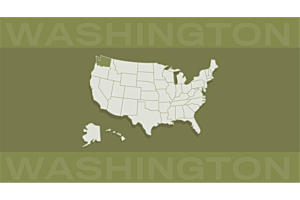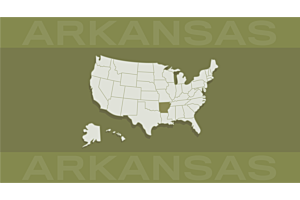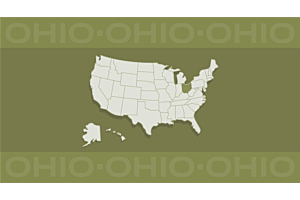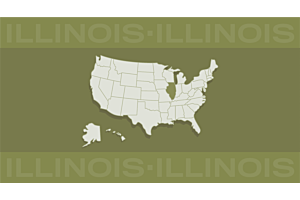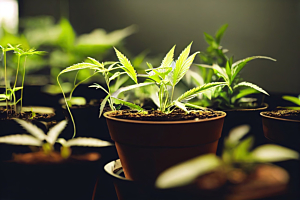Contents
Why is humidity control important?
What is the ideal humidity for indoor cannabis?
What to do if the humidity is too high
What to do if the humidity is too low
You've secured the best equipment and a sweet-looking space, but your crops seem like they could be happier. Have you given thought to how to control humidity in a grow tent? It may be the last thing on your mind, but it's one of the most vital aspects to consider.
The health of your crops depends on an environment with controlled temperatures and relative humidity (RH) levels. Investing in the correct equipment puts you one step ahead.
Let's discuss how to maintain the grow room humidity for optimal results at harvest time.
Why is humidity control important?
Knowing how to handle the humidity in your grow tent is as vital for your crops as the nutrients they need. A simple thing like turning your lights on and off around the plants affects the humidity levels.
Grow room humidity control is essential since failing to regulate it promotes diseases like bud rot and powdery mildew. Though your crops appreciate a fair amount of moisture, an oversaturated environment isn't healthy for root development and growth.
How does humidity develop in a grow tent? Cannabis plants transpire through their leaves, causing water vapor droplets to form. RH is measured as the amount of moisture in the oxygen vs. how much the air holds.
When temperatures in a grow room decrease, humidity increases. As soon as the air becomes too warm, the crops begin respiring carbon dioxide (CO²) through their leaves.
If the air is too dry, the plants lose more moisture than they can restore through their roots. The crops close their pores to retain water, resulting in cell death. When this happens, they also lock out nutrients, causing other deficiencies.
Working with a temperature and humidity chart helps to keep things consistent. If the grow tent is too hot, root rot and heat burn persist. It also reduces terpene and resin production, leaving you with subgrade buds.
Low temperatures and high humidity levels lead to stunted growth and fewer yields, while mold development becomes evident.
While keeping temperatures and humidity at favorable levels indoors, be mindful of your outside environment. The air in colder climates isn't as moist as in warmer temperatures, affecting your efforts to keep levels up or down.
Avoid getting mold on weed plants by learning how to control temperature and humidity in a grow tent at each growth stage.
What is the ideal humidity for indoor cannabis?
There are different requirements for your cannabis crops at each growth stage.
Temperature and humidity work in tandem and need consistent monitoring. Do you have the right equipment to monitor these levels daily? A quality thermometer and hygrometer measures these components indoors.
A humidity controller for a grow room comes in handy when levels need adjusting throughout the crop life cycle.
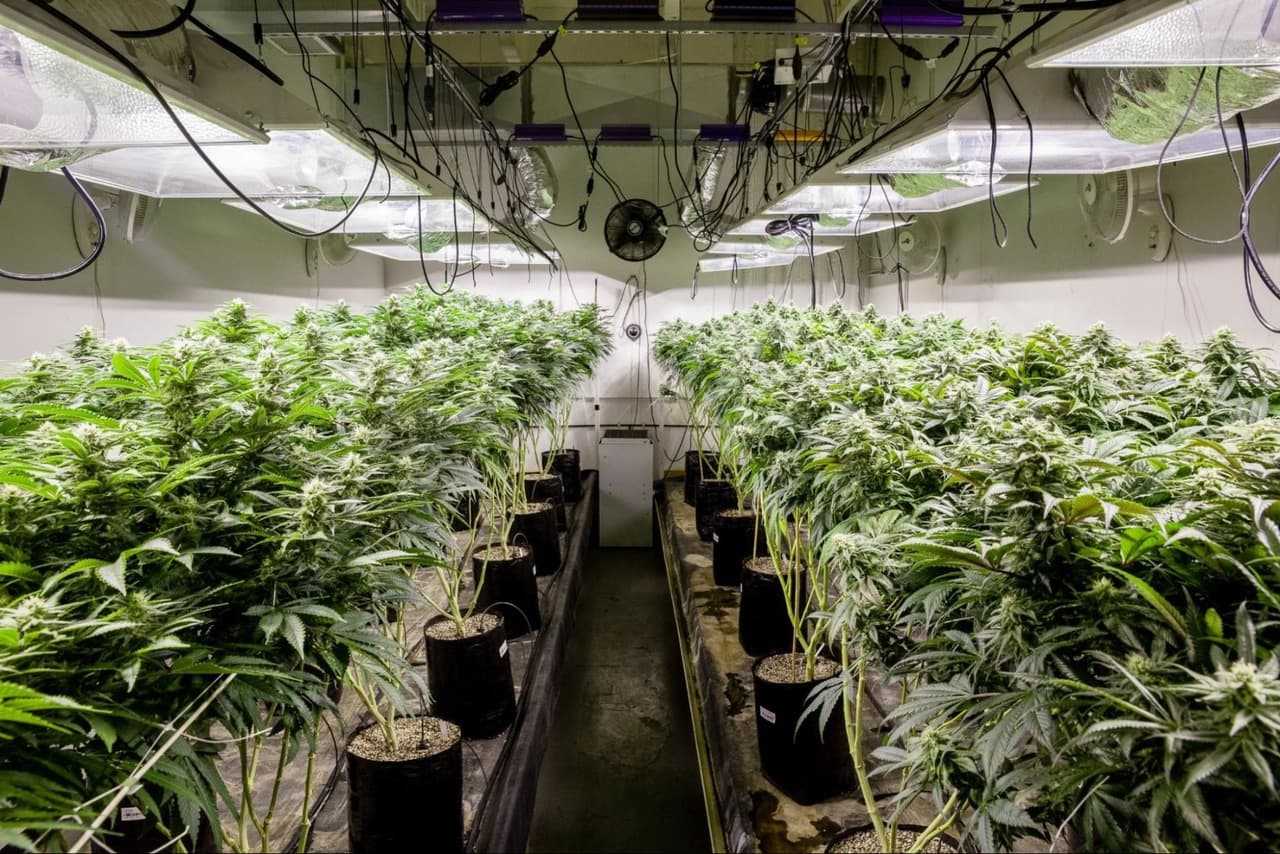
Seedling stage
At the seedling stage, cannabis plants start developing small, fragile roots that aren't strong enough to supply the plant with sufficient moisture.
Keep RH in your grow tent within the 65–70% range for seedlings and 60–80% for clones. The plant develops critical features at this stage, so it's vital to control humidity in a grow tent as the seedlings mature.
Maintain nighttime temperatures around 70°F with 77°F daylight temps to promote healthy vegetative growth.
Vegetative stage
During vegging, the roots are stronger and ready to provide the crops with the necessary moisture. Slightly drop humidity levels at this point to 40–60%. Reduce the RH by 5% weekly to prevent over-saturated roots, weak branches, and nutrient lockout.
When the grow lights are on throughout the day, temperatures range from 71–82°F. The crops need less warmth at night, so keep it at 64–75°F.
Flowering stage
Whether you secure the best cannabis seeds for beginners or veteran growers, everyone wants the same result. If your humidity levels are out of shape at this stage, you'll harvest low-grade nugs without much flavor or effects.
At this point of the growth cycle, the crops have solid roots and don't need high humidity levels.
Keep RH at 40–50% during the early flowering stages and lower it to 30–40% one to two weeks before harvest. Likewise, ensure temperatures are consistent at 68–79°F in the first weeks and not higher than 75°F later.
Lowering RH close to harvest time produces stickier resin, increasing bud quality. It also prevents bud rot and mold build-up.
Clones
Clones don't have a root system and rely on their leaves' water intake. The droplets that form due to humidity are the primary source of hydration.
Maintaining high humidity levels of 60–80% for clones is necessary for successful root development and rapid growth.
It's also essential to control temperature and humidity in a grow room for clones. It shouldn't get hotter than 85°F. Some cultivators prefer using a humidity dome to ensure sufficient moisture is available in the environment.
Here's a summary of the optimal levels at each growth stage:
|
|
Relative humidity |
Day temperature |
Night temperature |
|
Seedling stage |
65–70% |
77°F |
70°F |
|
Vegetative stage |
40–60% |
71–82°F |
64–75°F |
|
Early flowering |
40–50% |
68–79°F |
68–79°F |
|
Late flowering |
30–40% |
64–75°F |
60–68°F |
|
Clones |
60–80% |
70–85°F |
70–85°F |
What to do if the humidity is too high
You may be looking for ways to lower humidity because your grow tent seems more damp than dry. It could result from contributing factors like the condensed spacing of plants, the temperature in the room, or the light provision.
Correct grow room temperatures and humidity control measures prevent your setup from overheating or becoming saturated with moisture. If you find yourself in this position, there are ways to deal with it.
Consider using a dehumidifier
If humidity levels are too high in your grow room, remove enough moisture as quickly as possible. An efficient way to dry air is to place a dehumidifier within the space to extract water particles.
Keep the air moving at all times
A sound ventilation system helps with controlling humidity in a grow tent. While the crops need fresh air from outside, it soon becomes stale and needs to be exhausted. Getting the air to move around consistently is achievable with a strong ventilation system.
Be aware of standing water
Standing water for long periods creates the ideal utopia for mold and powdery mildew. Excess H2O in the soil is usually a result of over-hydrating your crops. Learn how to water cannabis plants and ensure durable drainage systems to avoid moisture build-up.
Keep a close eye on temperatures
A grow tent humidity control is vital, but so is regulating the temperature. Remember that the climate outside the grow tent influences the inside. A high temperature is one of the main causes of heat stress on cannabis plants.
Avoid overwatering
Steer away from over-watering your crops. Soaked soil or excess H2O in the pots trays raises humidity levels. Learn how to deal with overwatered weed plants to tackle the problem quickly.
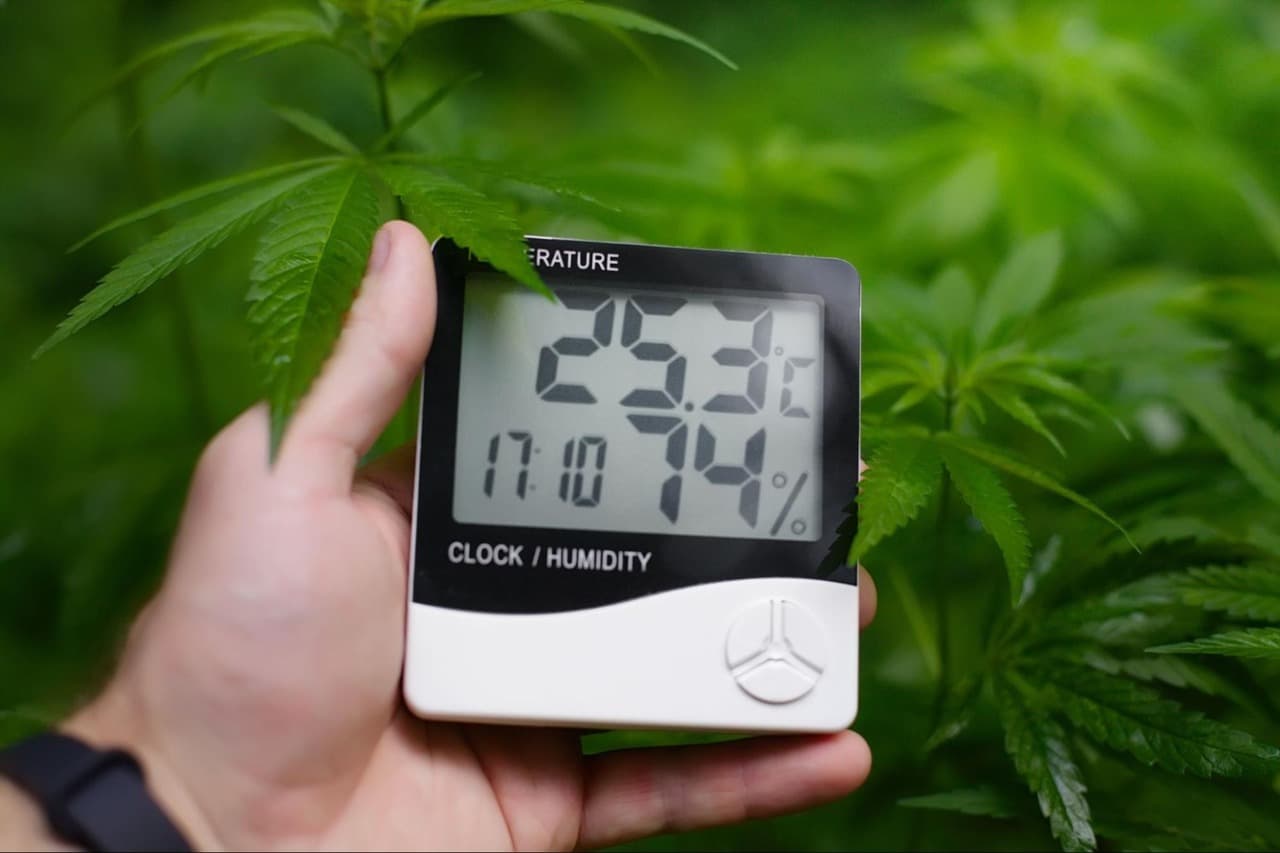
What to do if the humidity is too low
If you're experiencing low humidity levels, it means that the air is too dry in your grow tent, which is detrimental to the health of your crops.
Humidity control for a grow tent is essential as the environment can't be too wet or dry. Finding the middle ground is necessary to sustain healthy development patterns. Thankfully, there are ways to raise the humidity if it's too low.
Invest in a humidifier
Increasing the humidity is highly achievable with some of the best humidifiers for weed. Trying to moisten dry air with manual methods could become tedious.
Use a spray bottle to raise humidity
If you need to know how to control humidity in a grow room as a quick interim fix, mist your cannabis plants with a spray bottle. Gently spritzing the water over the foliage, soil, and walls raises humidity levels in a confined space.
Hang wet towels in your grow room
Place damp towels near air holes to draw in the moisture and wet the walls in the grow tent to increase humidity levels. Regularly check up on the saturation of the towel as it dries up fast.
Put a container with water in a grow room
Another way to control humidity in a grow room and raise the levels is to leave containers with water among the plants. Strategically place them near air vents to allow a fair amount of moisture to circulate throughout the space.
Consistency is key
Learning how to control temperature and humidity in a grow room is the saving grace for your cannabis plants. Keeping levels regulated throughout their life cycle is vital if you intend to harvest bountiful yields.
Many weed strains are resilient when it comes to different cultivation methods. It’s unfavorable to raise them in an overly hot, cold, wet, or dry environment. They then produce unhealthy crops with inferior-looking buds.
Follow a chart to ensure consistency and stay aware of all the numbers you need to remember.
Be mindful of the requirements of the crops at each growth stage, even with clones. It’s more rewarding to raise your plants from seed to maintain a healthy life cycle from the early days. Find high-quality weed seeds at our store.

